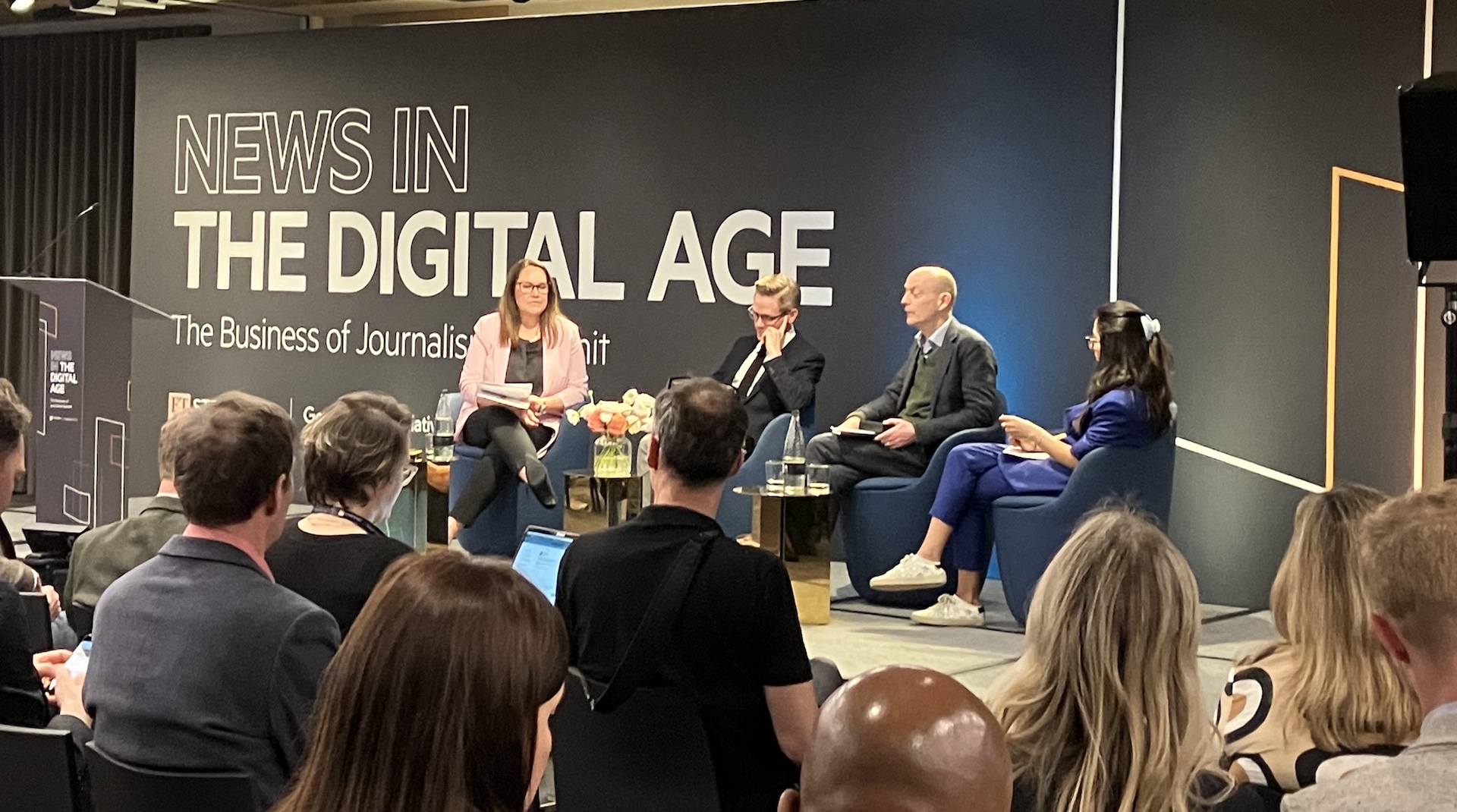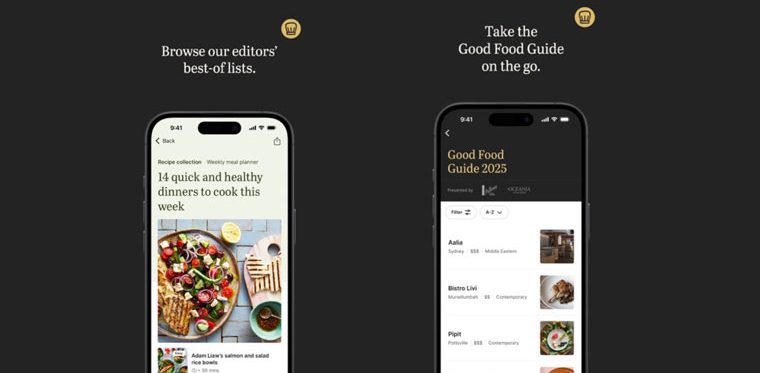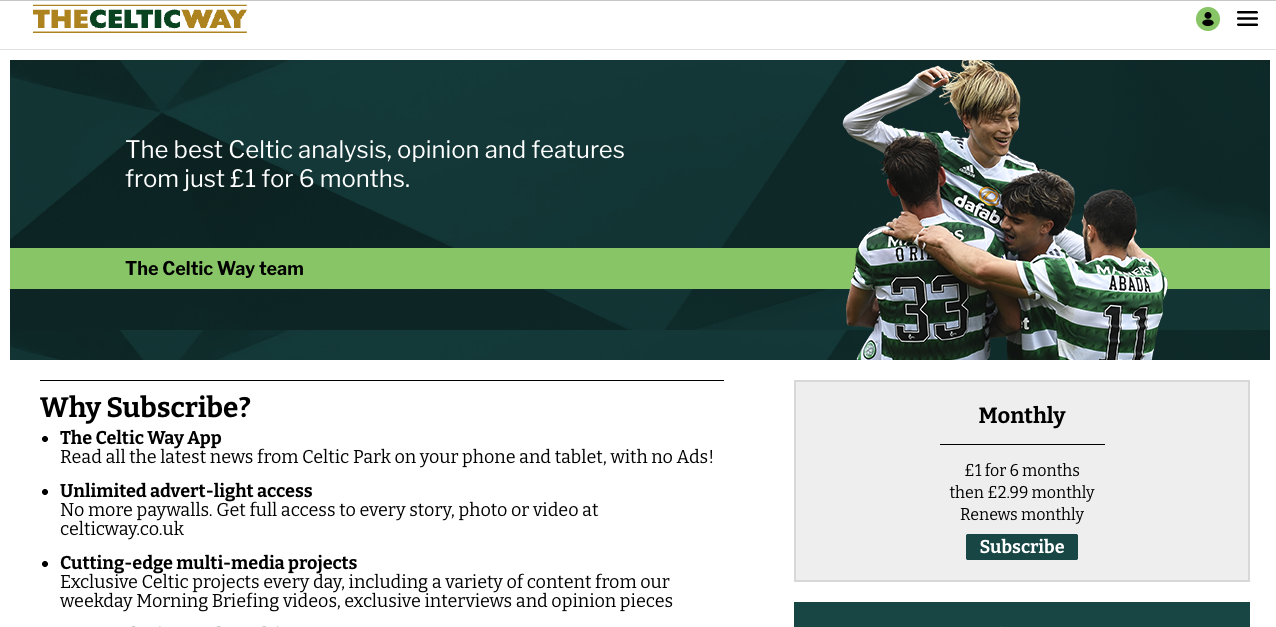
Newsletter
Newsletter
How you can use unifying goals, data and audience research to build products and media brands that stand out in a noisy media landscape.
24th March 2023

In the Pugpig weekly media bulletin, Pugpig’s consulting services director Kevin Anderson and digital growth consultant James Kember distill some of the best strategies and tactics that are driving growth in audiences, revenue and innovation at media businesses around the world.
From the Trump Bump to the Biden Slump, COVID, economic shocks and Russia’s invasion of Ukraine over the past few years, it seems less like a single black swan than a flock of these low probability but high impact events. And these events have given publishers whiplash as they were forced to rapidly respond to radical shifts in consumer behaviour as nations went in and out of lockdown and then the highest rate of inflation in four decades. As John Ridding, the CEO of the Financial Times Group, said at the recent News in the Digital Age conference, “there are so many crises coming so fast.”
And of course, in the background are disruptive technologies like generative AI that can churn out an endless stream of passable, if not entirely accurate, content. It speaks to the meta-challenge that Douglas McCabe of Enders Analysis laid out at the conference: “The fundamental opportunity for publishers is to distinguish themselves from the rest of the internet.”
The conference, hosted by FT Strategies and Google, laid out these challenges but also how news organisations can set goals and use data and product thinking to reach new audiences, engage them and generate revenue sufficient to sustain public-interest journalism.
The conference took place in a climate of increasing concerns about sustainability. As the Reuters Institute Digital News Report last year and the recent WAN-IFRA World Press Trends report found, optimism amongst news publishers is flagging due to inflation and a decline in advertising but also a decline in trust and an increase in news avoidance. In the short term, within the next year, it has meant that news publishers’ outlook has turned negative.
The challenges were part of three major themes throughout the day:
Sign up to get the Media Bulletin in your inbox.
Sustainability has come into sharper focus since central banks have raised interest rates in an effort to tame inflation. Price rises were already biting into the profits of news publishers as their print costs – paper, ink and distribution – rose dramatically, and then as central banks put on the economic brakes, that has hit advertising budgets. Costs have risen and revenue has fallen.
At the same time, the Reuters Institute found in its latest Digital News Report that “trust has fallen back almost everywhere”. This has coincided with a considerable decline in news consumption, what Reach in the UK recently referred to as “online attention recession”. Declining trust and news consumption are complex issues, but the Reuters Institute’s research attributes some of this to audience exhaustion after COVID not just in relation to the pandemic but also because of political upheaval in several countries.
When looking to restart audience growth, one obvious place that publishers look is to younger audiences. Nic Newman, of the Reuters Institute, put it starkly when he said that Gen Z spend only 1% of their time in news apps. Ouch, although I’m sure that the optimists amongst us will see that as a great opportunity for growth.
We’re all living these challenges. To address them, FT Strategies with the support of the Google News Initiative has been leading subscriptions academies to work with publishers to engage their audiences and grow revenue. Much of the day delved into the framework that the Financial Times and FT Strategies use and how publishers are using similar change processes to achieve their goals.
Key to the FT Strategies approach is the setting of a North Star Framework, a process of identifying a strategic goal that helps align an organisation.
The Financial Times has become an advocate of the North Star Framework because it has been crucial to its own success in digital transformation. It has helped the FT grow its paying audience 1.3m and its overall audience to 26m, the largest the newspaper has had in its 135 years, Ridding said.
Reader revenue is obviously a fundamental part of their business model, but a good subscription model is based on driving engagement and this naturally complements advertising. Ultimately higher usage means more page views and registration and subscription means that a publisher has more first-party data to serve up more relevant advertising to those known users.
The FT not only swears by the strategy but has developed an entirely new business, FT Strategies, around it. They believe their North Star Framework is critical to building a successful subscription business.
But what should those goals be, and how do leaders align and organise teams around those goals? In our experience, the best north star goals balance business and mission of journalism organisations so that they speak to the entire organisation. The FT had the goal of reaching 1m digital subscribers by 2019, but they have refined that goal now to focus on customer lifetime value so that they not only attract a large number of customers but also retain them. Another example was given during the conference of a publisher who wanted digital revenue to pay for their newsroom costs by 2025. Good north star goals are SMART goals – specific, measurable, achievable, relevant and time bound – but a dash of inspiration to stretch always helps.
The North Star Framework does go beyond smart goals in that it also touches on organisational transformation as well, and one of the elements of the framework is being evidence-based. Core to that is data.

FT Strategies promote access to data for all teams as part of seeing transparency as a core pillar of the North Star Framework. In a session on the power of data and insights, the use of data as a means to build a culture to deliver a sustainable trustworthy news product was discussed. The approach put forward by the panel was to make data accessible across the organisation and to embed analysts in product and editorial teams. There was a general consensus that data has become a bridge within media organisations, bringing together commercial and editorial teams and giving them “a common language” as Leo Xavier, the director of product for Portuguese online publisher Observador stated.
Expanding access to data is one key shift at high-performing publishers, another shift is the kind of data that publishers are focusing on. As publishers shift to focus on retention, lifetime value is becoming a key metric, and publishers are also now trying to understand user behaviour and habits.
Some publishers use surveys or structured user research, but Florian Stambula, Head of Product at Der Standard, said that the news group mines their active comment section to understand what their ‘super-users’ are doing. They use metrics from this group for feedback on products and content.
At Pugpig Consulting Services, we have developed loyalty segments for publishers so that they can see how their casual, prospective loyalists and superfans are engaging with content and products so that they can make informed strategic decisions about content strategy and product direction.
And echoing another theme at the conference, the Pugpig Consulting Services team knows that access to data is one thing, but unlocking the value of data is essential. We work with teams to mine data for insights that directly relate to their strategic outcomes.
One of the strategic outcomes our clients are asking for support with is striking the balance of top-of-the-funnel audience growth with subscriber growth. Cliona Mooney, the Irish Times’ Subscriptions and Reader Insights Director, discussed the Times’ approach to a blended premium and non-premium content strategy and how data has led them to different approaches with their national and international audiences. They analysed engagement, rather than page views, to understand what content is most important and then applied it to social campaigns targeted to new markets within the Irish diaspora of London, Boston and New York. As the FT’s CEO pointed out in the opening of the conference that whilst “enabling people to go deeper into their interests is key to driving engagement” for it to be sustainable “it needs to be kept open”, allowing the reader access to a range of content to build interest.
And as we often say here on the Media Bulletin, we are seeing a shift from measuring what people do to data that helps us understand why people are behaving in a certain way. Quantitative data might be a source of questions that only qualitative data can answer. When developing the FT Edit app, senior product manager Dilyana Evtimova, began the development process for this curated digital product with user diary research in the US, a key market where they wanted to expand.
This was just one example at the conference that demonstrates how product development is maturing at news organisations and becoming a key process in how publishers are developing more audience-centric products.
And as subscription models continue to develop, several publishers are bundling traditional news and non-news products in ways to drive engagement, retention and customer lifetime value. The Telegraph’s Product Director Mathias Douchet explained how the London based newspaper has expanded their offering to include non-news subscriber benefits such as a games and a wine club. Another nugget from Douchet was how they had found that retention is linked to attention. The more time a subscriber spent with their products the more likely they were to renew their subscription, and their highest attention product was their app with users spending on average more than an hour with it.
Another high-attention product is games. As we found in our State of the Digital Publishing Market report last year, a national news publisher saw more than 20% of time spent by users in their app was with games. After acquiring Wordle in January last year The New York Times approach has been to use games as a driver for engagement and their Head of Games Jonathan Knight was present to talk about their use of an ‘all access’ bundle, which included both news and games. Knight said that the NYT had seen a much higher retention rate from users who engaged with both news and games, a thought echoed by the Telegraph.
So how do media organisations ensure they maintain trust or win it back? The most effective way for media organisations to navigate the increasingly crowded landscape is to ensure that they distinguish themselves, commit to their niche, focus on the value proposition and drive engagement. And key to that is a focus on audiences. Douglas McCabe of Enders Analysis chided some publishers “who think the audience is an advertiser and not a reader”. The entire day was filled with examples of product development and management tactics that had delivered more value to readers and those readers paid back that value in time, attention and subscription revenue.
However, core to news organisations’ products is their content, and one of the key threads running through the day was differentiation and building a consistent, strong brand that engenders trust and loyalty. Whilst the fundamental drivers of trust haven’t changed, Rasmus Nielsen from the Reuters Institute pointed out that larger social and political forces have created an overall lowering of trust in institutions and media is just one part of this.
However, the question that lingered throughout the day and was the focus of the final panel was: We are successful today, but how do we attract and engage the audiences of the future so that we will remain successful tomorrow?
While the statistics about Gen Z engagement with news can be worrying, McCabe reminded the conference that while young people tend not to engage with more traditional news formats to some degree that’s always been the case. Today’s youth have a much wider media diet through social platforms, and this presents an opportunity for publishers that are able to adapt their content.
Jack Kelly, the founder and CEO of TLDR News, which predominantly distributes video content on YouTube, suggested that news organisations should resist the temptation to produce ultra-short format content for Tiktok and instead focus efforts on making their product as engaging and unique as possible. Moreover, Kelly stated that what Gen Z are generally most attracted towards is media that builds a community and publishers that are able to leverage that will be better placed to attract younger audiences.
There are multiple approaches though. Jonathan Mackenzie, Executive Producer at Tifo, part of sports publication The Athletic, took the conference through Tifo’s approach to using social media as the top of the funnel, building highly engaging videos with strong branding that will convert users ultimately into subscribers. While it is a challenge getting Gen Z users away from Tiktok and into news apps, building sustainability and trust, good product quality and engagement are the key levers publishers can use across their products and across age groups.
For an organisation to hit its goals, the quality of product is more important than ever. This means being placed to offer personalisation of content across online platforms, having a newsletter strategy and an app is key. At Pugpig building great products for publishers is what we do and our Consulting Services team is helping our publishing partners get the most out of their product, through design, audience growth, conversion and retention. If you would like to discuss how we can help you, contact us at info@pugpig.com.
Here are some of the most important headlines about the business of news and publishing as well as strategies and tactics in product management, analytics and audience engagement.

Newsletter

Newsletter

Newsletter

Newsletter

Newsletter